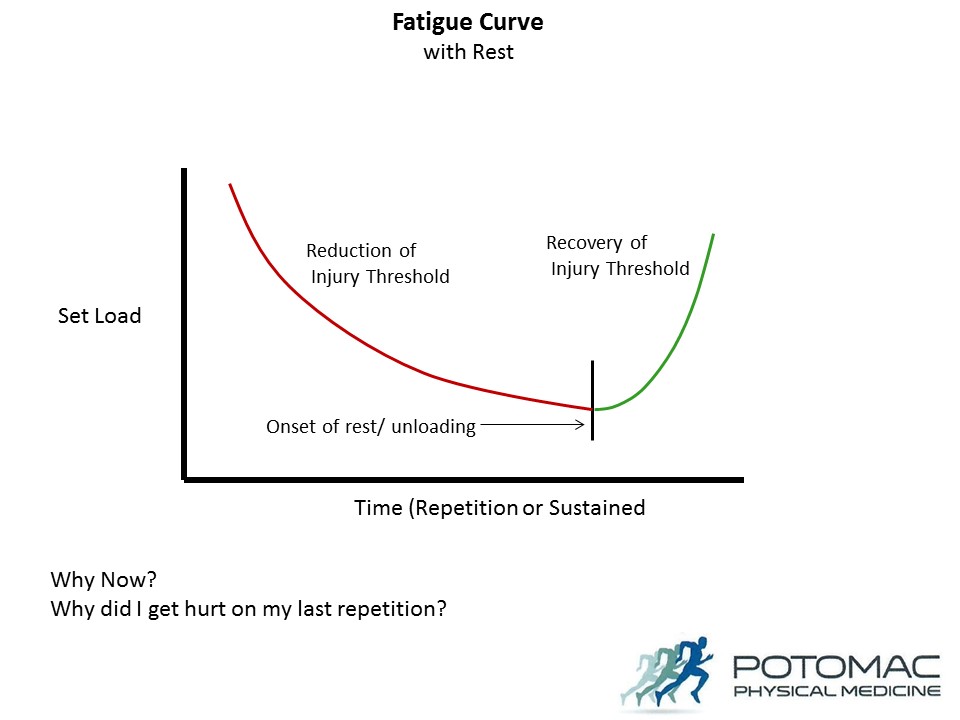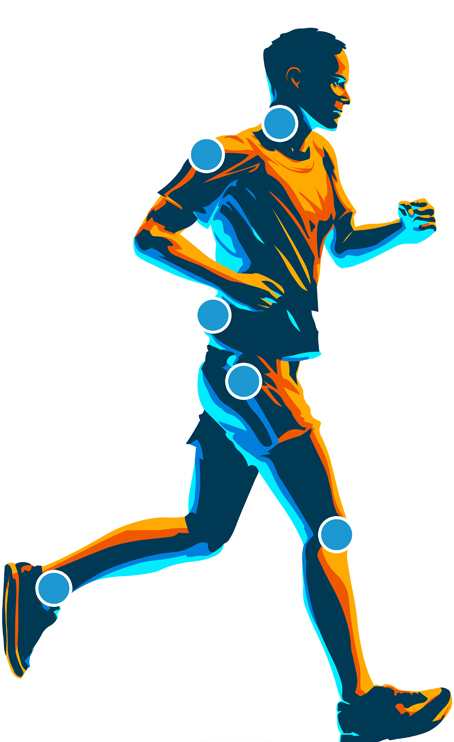
12 Oct Learn How to Exercise Safely When Injured
by Dr. Matt Fontaine
On almost a daily basis I am asked…”So Doc, Can I Safely Return to Exercising Now?” Or
“Can I still exercise while I am treating and recovering from my injury?”
Here is how this conversation typically unfolds over the course of the first few treatments to first few weeks… and typically the narrative continues throughout the course of treatment.
Day 1 or Patient visit # 1
Upon my completion of taking their medical history and performing a physical examination I will often begin to highlight some of the things I discovered and describe what our best approach is likely to be. When I ask if they have any questions, this one comes up nearly 9 times out of 10…
Patient Joe Athlete: “What exercises can I do to fix this quick and prevent it from coming back?”
My response is to tell them that we absolutely will prescribe exercises to retrain for better movement and function, but that exercises are only one pillar of the 3 pillar approach. And then I focus on the importance of joint and soft tissue manipulation. I reinforce to them that the exercises we prescribe are vital to stabilize the changes we make with hands on manual treatment. They reinforce how we move, but only after manual therapy fixes a movement based problem.
Typically somewhere a few visits into treatment, especially if the patient is already feeling better, they wil ask me something like…
Patient Joe Athlete: ” So doc, how does my injury feel? Is there less scar tissue? Are the muscles working better? Are my joints moving better?”
My response to them is that over the course of a few treatments (in as little as 4-6 treatments) I expect that we will begin to see changes in tissue pliability (improved range of motion and increased sliding of the tissues). What this means is that some of the tissue adhesion (glued down repaired tissue that results from repetitive motion or overuse injury) has been released and some of the tissues have improved gliding, relative to one another as muscles overlap and must slide relative to neighboring tissues. ”
With regard to muscle function I tell patients that manual muscle testing provides a window into the nervous system to show us if a muscle is engaging or not. We test these daily as indicators of joint dysfunction. We know joint function will often dictate muscle function. Compressed or misaligned joints often cause a muscle or muscles to weaken. Poor joint alignment of joint compression can impact nerve output to the muscle, similar to a dimmer switch on a light. If the dimmer is down some, the light has less output. And so it can be with muscle function. Imagine trying to perform at an optimum level when there is a dimmer switch on your muscles. Not good.
Patient Joe Athlete: So, can I safely run, bike, swim , lift weights, etc. without causing more injury?
My response to them is ” That is the million dollar question.”
When dealing with soft tissue injuries, restricted joint motion, and overall poor movement, it takes time to make changes. A fracture can heal typically in 4-8 weeks provided there are no complications. Soft tissues are more dynamic and because the injured soft tissues and fascia are rarely immobilized, they have to handle load and tension on a daily basis. During exercise, these not yet healthy tissues will have a decreased capacity to handle load under tension and further injury may result.”
Let’s look at some principles that govern how the body breaks down under repetitive motion.
Can you safely swim, bike, run, CrossFit or whatever other activity without sustaining further injury?
A basic mathematical equation can help us to understand this better.
I= NF/AR
Where the extent of Injury (I) is determined by the Number of repetitions (N) multiplied by the Force of repetition (F) and divided by the product of Amplitude (A) times Recovery time (R)
This means that all load into tissues is cumulative. Tissue damage occurs overtime with repetitive movement.
If tissues are loaded above their capacity to handle that load, then injury will occur. Pushing the body a little bit beyond it’s threshold results in minor microtrauma the body can repair. Remember, the body repairs soft tissue with inelastic type III collagen and so some degree of adhesion will result. This type of collagen is fibrous, less elastic and more prone to injury. Our normal healthy tissue is made up of Type I Collagen, which is elastic and absorbs shock and stress well. The goal of regular mobility work with foam rollers and lacrosse balls and the like is to mobilize this scar tissue in real time as it forms in an attempt to prevent it from accumulating over time. Despite being consistent with mobility work, this is extremely difficult to accomplish.
It is important to note that sustained contraction or repetitive motion causes muscles to tighten. This tightness squeezes off blood supply, which causes hypoxia (decreased oxygen to the tissues). This hypoxia sets off the very same reaction that occurs in the body after an acute trauma. It signals the body to lay down fibrous scar tissue in the exact same way it does after a muscle or ligament is torn.
Pushing the body beyond it’s threshold over and over and over may result in more serious injury. Worse still, there is often no immediate signs of pain to war us.
Let’s look at Injury Curves

The above figure represents decreasing threshold of soft tissues, fascia, and joints with cumulative training and repetitive motion. Overtime these tissues loose capacity, become weaker, inhibited and more injury prone. Overtime, continued training combined with incomplete or poor recovery results in more stress and trauma to these tissues. Eventually injury, pain and inflammation ensue.
Staying in the Game
One of the main goals when treating athletes is to keep them training and competing in their respective sport if at all possible. That may involve decreasing training volume to reduce the repetitive action below the threshold of further injury. In acute or severe chronic cases, complete rest from the activity or sport for a period of time may be necessary for complete recovery. After evaluation and initial first 2-4 treatments, the physician should be able to determine if the sport can be continued during treatment and rehabilitation.
It is important to note that with training while recovering from injury, there is a fine line between the volume and intensity. Determining how much activity can safely be handled by one’s body and still make progress in rehab and recovery is extremely vital to successful outcomes. If we push the body too much, it simply can’t recover.
Everyone has different genetics and abilities that will make each individuals’ training volume/intensity threshold different from the next person. It often requires trial and error to determine someone’s specific threshold. Once that is determined, he or she must keep training volume and intensity below that threshold during the rehab and recovery phase to allow the injury to recover.
What signs & symptoms should I look for so I know the injury is coming back?
If the athlete can do his or her sport, like swim, bike, run, CrossFit, Orange Theory Fitness etc. without pain during the activity or sport, that is a good sign the activity can be tolerated without further injury. It is especially important to watch for pain and swelling the day or two after doing a run or lifting weights or playing a sport.
If the athlete has a lot of marked soreness and the injured area “feels raw and beat up” or has increased pain, this indicates the volume and or intensity of the sport or exercise was too much and overloaded the tissues creating further tissue damage.
During treatment and rehabilitation, it is imperative that we continue to monitor the athlete as they ramp up their activity for these signs of pain and swelling. As long as we can avoid the pain and swelling with a certain level of activity, say for instance a runner who can tolerate a 5K run without pain, then we can progress them to increase their running volume each week. Volume can be increased only as long as it is tolerated without pain and increased inflammation. If we reach a point of too much activity and overload, we can deload by decreasing the volume and or intensity of the activity or sport.
Pain: The Body’s Built In Fire Alarm. Usually the alarm sounds too late.
As a physician, I often hear patients tell me that they have been playing a sport or doing an activity for years and never had a problem. the patient may say something like…
Patient Joe Athlete: “Doc, I have been playing tennis for over 30 years and I never had any pain or injury until now. I don’t understand. What happened?”
Here is the analogy I often use to explain this:
If you punched the wall over and over for 20 hours, what would happen? The first few punches may not hurt or cause injury. But the trauma to the soft tissues and joints is cumulative, eventually enough wear and tear causes breakdown to the point of pain. Likewise, if I drive my car over and over for years, I may not know there are problems developing. Eventually enough wear and tear occurs and warning signs emerge (noise, black smoke etc.) For the body, it’s warning sign is pain, and although the presence of pain definitely indicates tissue damage, the absence of pain does not indicate the absence of injury, tissue damage or pathology.
By the time pain is evident, tissue damage has already occurred.
What to Do: Getting Proper Treatment
The first priority is to restore motion to the joints and the soft tissues. This is where manual treatments like joint manipulation, Active Release Techniques and Instrument Assisted Soft Tissue Release have their “sweet spot” in treatment. These are the best methods of treatment for joint and soft tissue dysfunction.
Once these issues are improved or resolved, then we can progress to balancing strength with exercise and progressing to sport specific improvement in strength and endurance.
The OVERALL TREATMENT PLAN MUST BE AN INTEGRATIVE PHYSICAL MEDICINE APPROACH– not just an exercise video- not just exercises to strengthen weak muscles.




